BOOK EXCERPT
A winning strategy: Nurturing endurance and embracing change
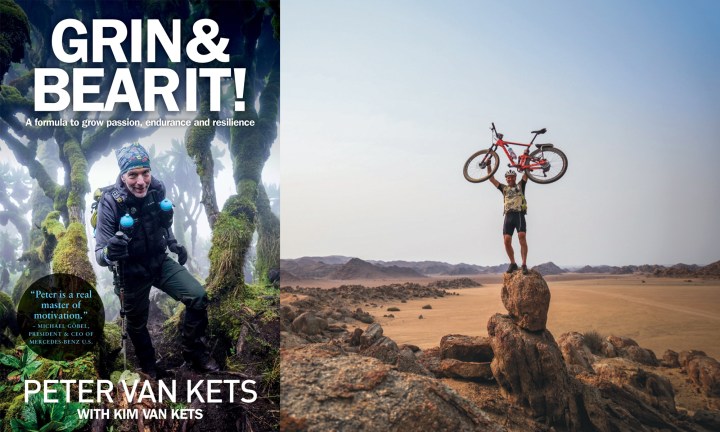
In ‘Grin & Bear It!’, South African adventurer and conservationist Peter van Kets outlines a few ways that can help us nurture endurance.
Peter van Kets has had to defy his genetic predispositions to accomplish physical feats throughout his career. From rowing the Atlantic (twice) to mountain-biking the Namib, he explains that much of his success can be connected back to endurance. In his new book Grin & Bear It!, he shares 16 steps he believes can help us grow and nurture endurance. Here is an extract from a chapter on “Embracing Change”.
***
Plan A, B, C… and Z
“Change is inevitable in life. You can either resist it and potentially get run over by it, or you can choose to co-operate with it, adapt to it and learn how to benefit from it. When you embrace change, you will begin to see it as an opportunity for growth.” – Jack Canfield
One of the great perks of my life as an adventurer is that I get to speak at conferences all over the world. I get to meet some amazing speakers, and hear their incredible stories. To me, the most interesting of these speakers are the futurists.
The future! What does it hold for us, and this fragile planet of ours?
One thing the futurists all agree on is that the rate of change in our world is unprecedented. If we want to succeed in business and in life, we have to be able to exercise our ability to embrace change and cope with the unexpected.
Our Beyond the Rift Valley expedition in Rwanda provided the perfect example of the need for an adaptive approach. After encountering the unexpected, I had yet another opportunity in my adventuring career to learn first-hand the immense value of being able to quickly and graciously adapt to changes in conditions, and to adjust an existing strategy to new circumstances. We need to put ego aside and be comfortable with the constant possibility of Plan A becoming Plan B or C… or Z! In this instance, Jacques and I got together as expedition team leaders, and discussed options we’d become aware of during our pre-trip research. The result wasn’t first prize, of course – but it was the best possible solution under the circumstances. And the most important thing was not giving up.
I have learnt the lesson of flexible planning many times in my career, most profoundly during the Woodvale Atlantic Rowing Race with Bill Godfrey in 2007/2008. The nuances of our strategy and decision-making are covered in some detail in The Eighth Summit, but a summary will convey the point here.
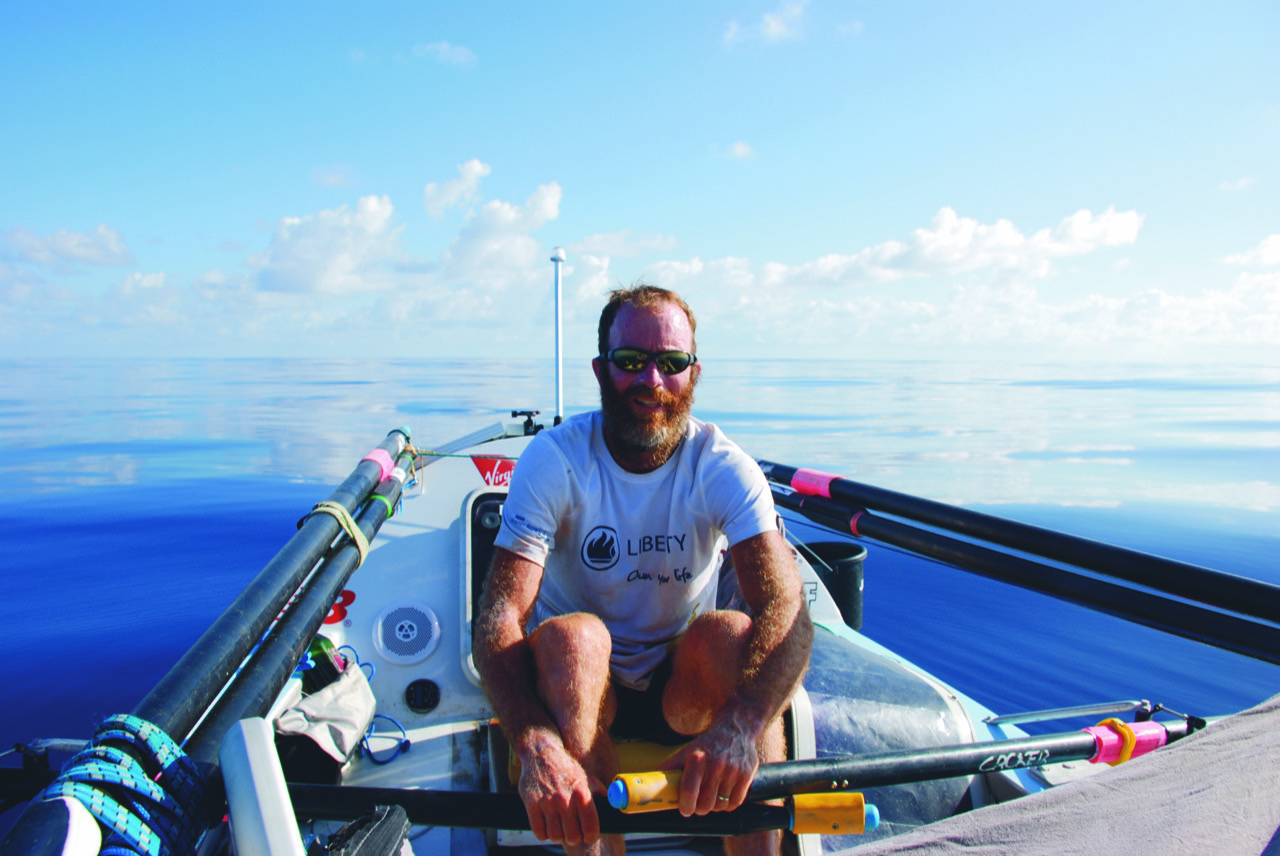
Peter van Kets crossing the Atlantic. Photograph courtesy of Peter van Kets

Peter van Kets. Photograph courtesy of Peter van Kets
Navigation strategy is often critical in endurance racing, and especially in an ocean crossing, when competitors must battle prevailing winds and currents along the way. In the case of the North Atlantic, whether you’re rowing or sailing, the commonly held wisdom is that you shouldn’t take a direct route, as that way invariably takes you through the massive, unpredictable and often unfavourable Azores high-pressure system. Most of the time, it is far more productive to plot a southerly route at first in order to connect with the westerly North Equatorial Current, which is accompanied by favourable trade winds. This was our intention, and we had spent hours meticulously planning it with the clear aim of winning the race.
It just so happened, however, that in the days before the start of the 2007 Woodvale Atlantic Rowing Race, the Azores system was unseasonably far north. Bill and I discussed this in detail with Howard Fairbank, a South African yachtsman on a solo circumnavigation who happened to be in the Canary Islands for the start of the race, and we made a massive call with just two days to go: we would try a brand-new strategy and take the direct route, thus saving us several hundred kilometres.
As it turned out, this proved to be a brilliant decision – at least to start. After a week, we found ourselves in first place, with just the Pendovey Swift team having attempted the same route. For two weeks, we maintained a narrow lead over Pendovey, before meteorological disaster struck in the form of a small, unpredicted low-pressure system. Within hours, conditions had altered and deteriorated, and we found ourselves stuck on parachute anchor as our competitors on the traditional route started making up ground. We consulted with our weatherman Tjaart by sat-phone, and decided urgently to change our navigation strategy once more. Not only that – we would have to change our rowing strategy too.
By this point, we had settled on the strategy of rowing separately for 90 minutes and resting for 90 minutes. Now, to stay in contention for line honours, we found ourselves rowing for 90 minutes and resting for half an hour as we attempted to power our way out of trouble, heading due south towards the traditional Atlantic crossing route. We rowed like this, in tandem for half an hour at a time at the beginning and end of shifts, for three days and nights. As you can imagine, it was murder on our bodies.
In the end, by being flexible enough to change plans twice, we achieved success. In so doing, we first managed to secure the lead after a week, giving us the self-belief that we could win the race; then we managed to maintain that lead and actually win. And to illustrate how fine the margins were in these decisions, remember that after 50 days at sea, we crossed the line just six hours ahead of the second boat.
Team Pendovey Swift, meanwhile, had been bold enough to go against the grain initially, and found themselves fighting for the lead with us as a result. But in the heat of competition, they couldn’t adapt, and ultimately ended up wallowing in the north, out of contention. They arrived in Antigua 12 days behind us.
***
There are no greater breeding grounds for adaptive behaviour than those opportunities found in major expeditions. Constant changes in the environment force it; if you don’t adapt, chances of success diminish rapidly. But you don’t have to be faced with the Rwandan military in a rainforest to experience the stress of a rapidly changing environment – just look around at the world today.
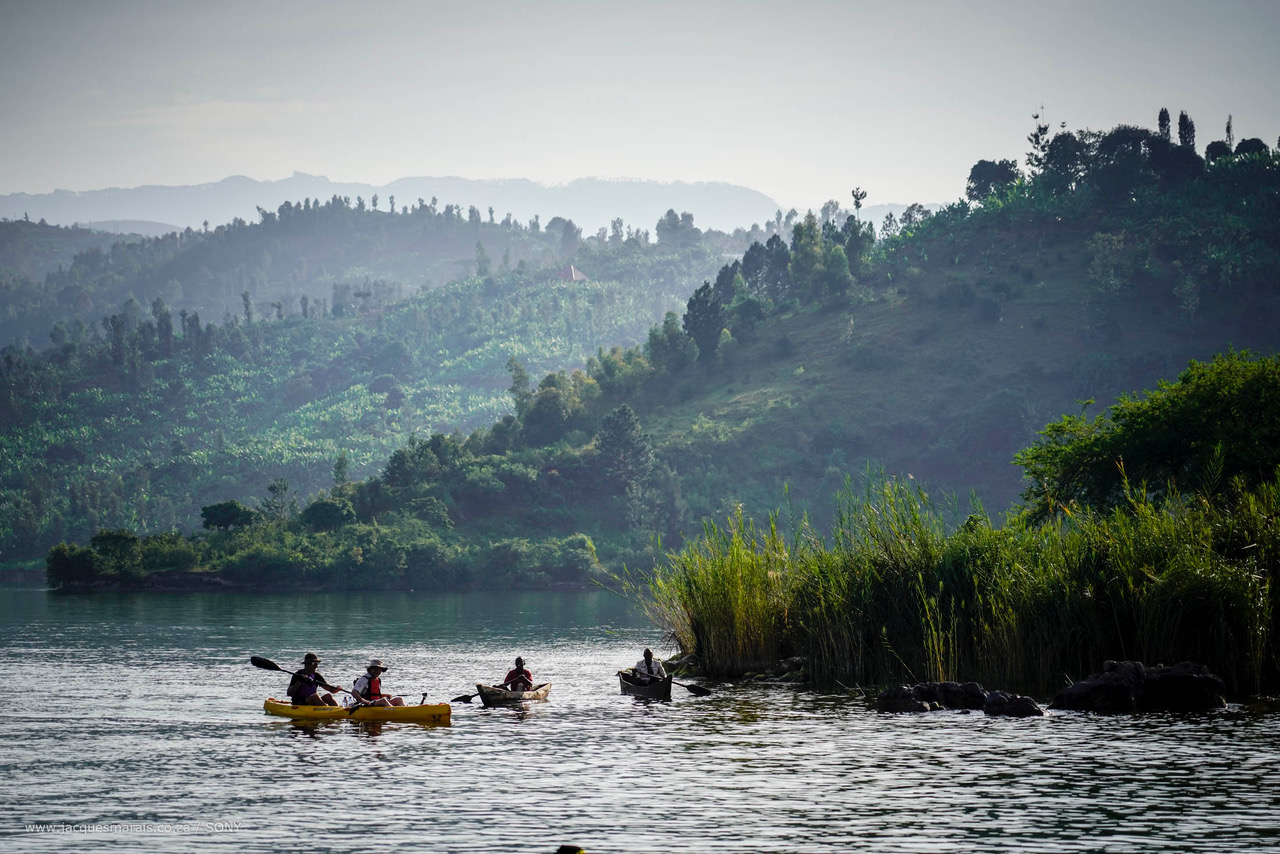
The DUNLOP #BTRV Expedition – from Cape Town and via Botswana, Zimbabwe, Zambia and Tanzania, to Rwanda in East Africa – saw the #BeyondExpeditions Team exploring some of Africa’s most remote gravel roads on this mammoth cross-continental road trip. Image: Jacques Marais
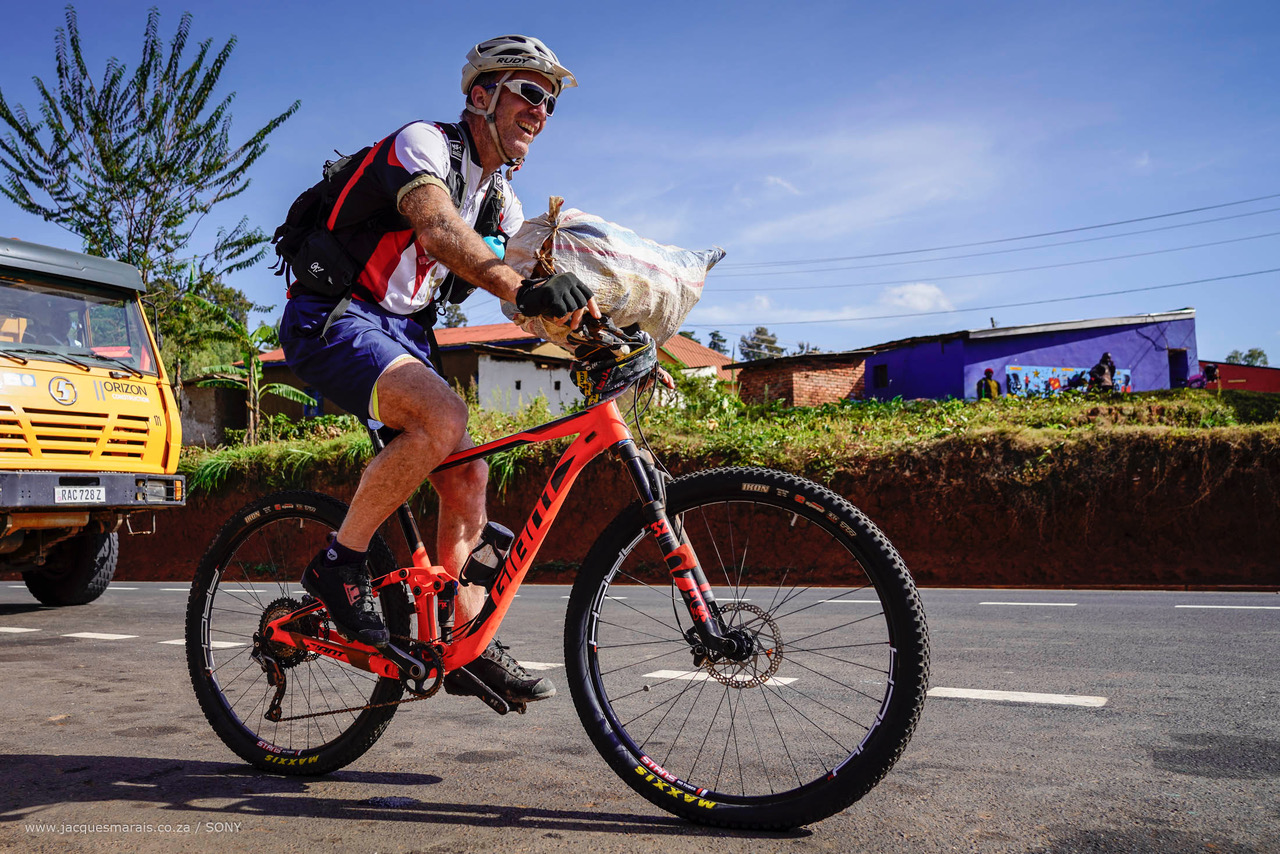
The DUNLOP #BTRV Expedition – from Cape Town and via Botswana, Zimbabwe, Zambia and Tanzania, to Rwanda in East Africa – saw the #BeyondExpeditions Team exploring some of Africa’s most remote gravel roads on this mammoth cross-continental road trip. Image: Jacques Marais
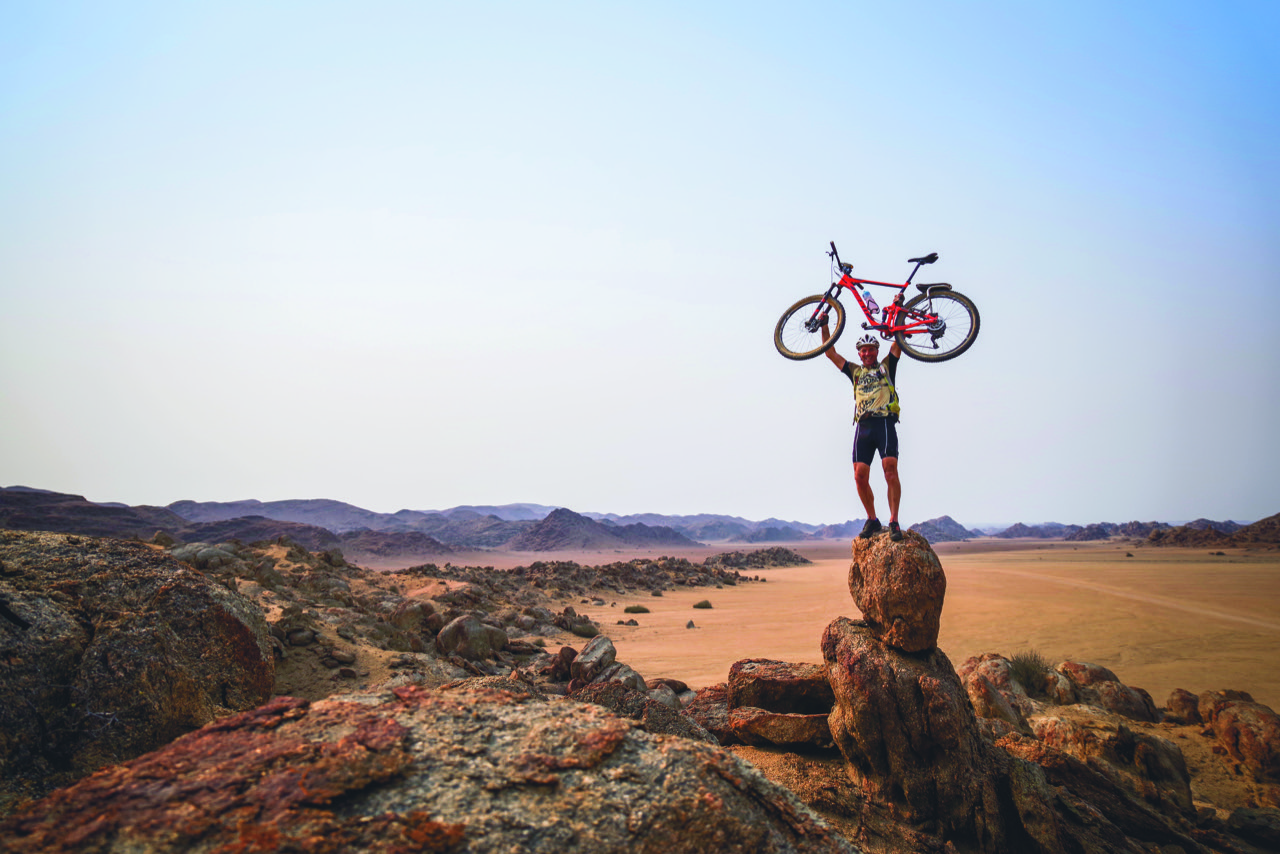
Peter van Kets. Image: Jacques Marais
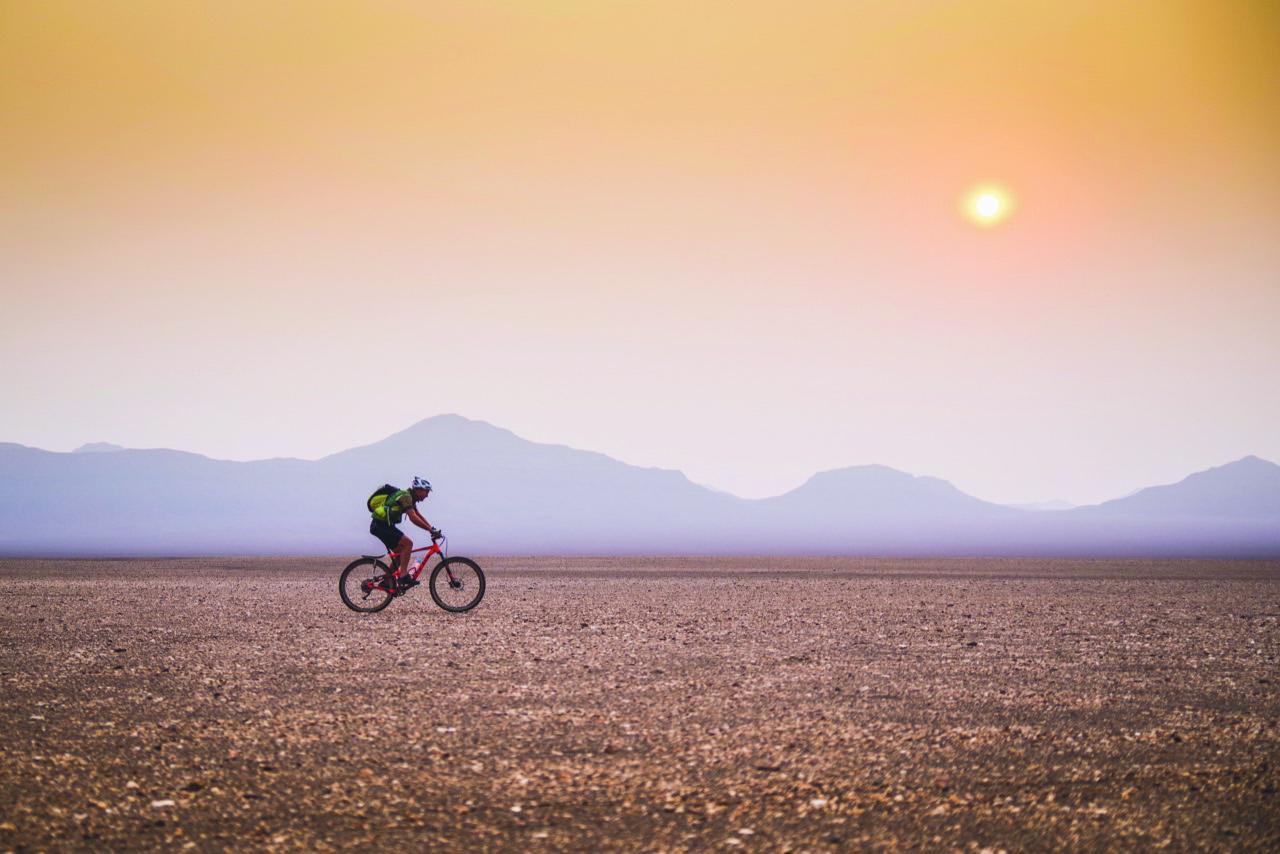
Peter van Kets cycling. Image: Jacques Marais
In his poem The Secret Sits, Robert Frost wrote, “We dance round in a ring and suppose, but the Secret sits in the middle and knows.” There are, of course, different ways to interpret a poem, but in an expeditionary context I see it like this: we can run around in circles coming up with great plans that we think will pan out in a certain way, but until we’re in the thick of it, we can’t know what nature or the universe has in store for us. We need to adapt to what actually happens around us, rather than what a rigid plan might have suggested would happen.
It may feel like we know a lot right now, but in 10 years’ time, especially with the influence of AI, many of the businesses we know today will be unrecognisable. One of the biggest challenges leaders face is being able to adapt: having a clear plan, but being flexible when circumstances dictate. The lesson I introduced in The Eighth Summit still stands: We’re living in dynamic times in a dynamic environment. It’s absolutely essential to have a good strategy in place if we are ever going to achieve the visions and goals that we have for our lives; however, we must be vigilant and aware of the changes happening around us, and we must be able to adapt our strategy accordingly. A clear but flexible strategy hugely improves your chances of success.
When we are unable to adapt, we get derailed, immobilised by rage or frustration. In contrast, knowing that you have the ability to adapt swiftly and seamlessly without unnecessary stress builds confidence without dampening that all-important enthusiasm. If we want to remain filled with passion – without our endurance and resilience being compromised – then we have to be able to embrace change. DM/ ML
Grin & Bear It! by Peter van Kets, published by Mercury, is available at bookstores across South Africa, at a retail price of R320.
In case you missed it, also read Bamboozled: In search of joy in a world gone mad
Visit Daily Maverick’s home page for more news, analysis and investigations















 Become an Insider
Become an Insider
Comments - Please login in order to comment.